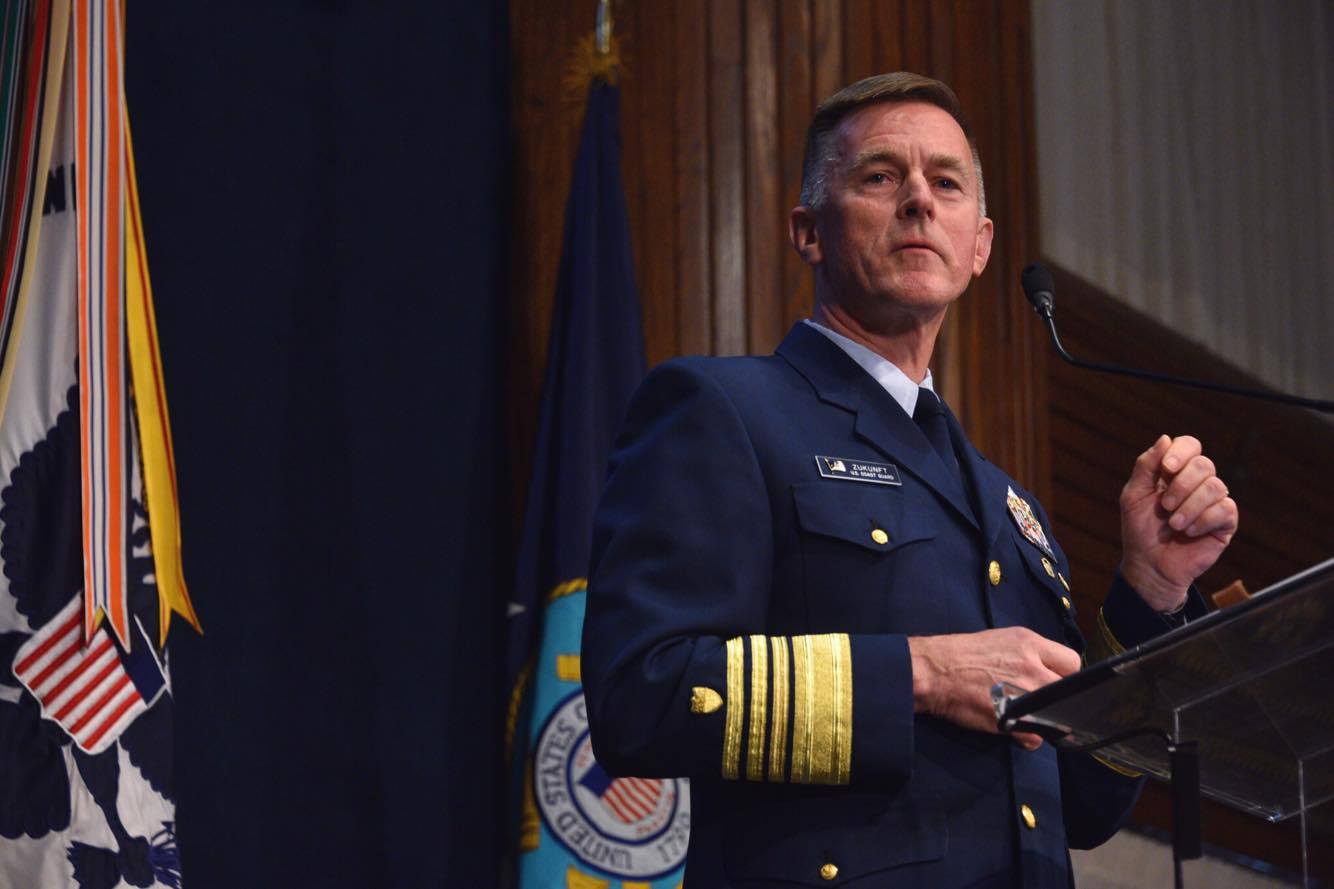
The commandant is looking to increase the Coast Guard active-duty force by 5,000 over the next five years, restore 1,100 billets in its reserves that were cut by sequestration, and modernize its “geriatric class of cutters” working inland waterways.
Delivering his State of the Coast Guard address Thursday in Washington, Adm. Paul Zukunft said, using boxing analogies several times, “we no longer live in a world of flyweights” and need to be funded at a higher level – the flyweight class being the lowest of the 16 in boxing.
Among other investments for the future, he mentioned buying more unmanned aerial vehicles to improve surveillance and interdiction, tackling the backlog of $1.6 billion in needed facilities repairs, and bringing the service’s information systems up to date.
Zukunft said that, unlike the other four armed services, which are expecting a $54-billion increase in spending under the Trump Administration’s budget outline released Thursday, the Coast Guard falls into a category of “non-defense discretionary spending” because it is part of the Department of Homeland Security.
“Our funding is classified incorrectly; yes, we are in the national security business,” he said.
In mentioning the need to replace the inland waterways cutters, Zukunft stressed, “our funding needs to reflect the power of [the Coast Guard’s] punch” as a middleweight.
Zukunft said acquisition and deployment of the nine National Security Cutters is on schedule. The fifth, USCGC James (WMSL-754), is beginning its first deployment. This class of cutters “more than pays for itself in a hundred days” in drug interdiction and maritime security operations, he added.
That class, plus the Offshore Patrol Cutter and Fast Response Cutter classes, “have proven to be game-changers for the 21st century” and are entering service on schedule and budget.
On the first heavy-duty icebreaker, “we are well on the way to accelerating the delivery” by 2023, pending available funding. Zukunft said plans still call for three heavy-duty icebreakers and three medium icebreakers. The Coast Guard opened an integrated program office with the Navy to draw on its shipbuilding experience, he added.
Among the Coast Guard’s accomplishments in the past year were the seizure of 201 metric tons of cocaine, arresting and convicting more than 580 transnational criminals, the Helicopter Interdiction Tactical Squadron’s 500th seizure earlier this month, stopping more than 5,000 Cubans from entering the United States, and the creation of a cyber protection team.
Zukunft said aiding in drug and human trafficking interdiction efforts are the 60 bilateral agreements the United States has with other nations. Using Colombia as an example, he said the two governments work closely together on trying to control the flow of cocaine from its number-one source to its number-one consumer. The Colombian government “realizes the shared threat to regional stability” of the trafficking. Zukunft said the impact is felt in Central America, where drugs are unloaded for further movement northward – the rise of violence there as gangs fight over control of the illegal trade then spurs a flow of migrants seeking safety by heading to the United States.
Despite a growing signal from partner countries and combatant commanders that they want more U.S. Coast Guard presence, “there were 580 events that got a free pass” last year. The intelligence was there to investigate, Zukunft said, but there was an “issue of capacity” in available Coast Guard aircraft and ships.





